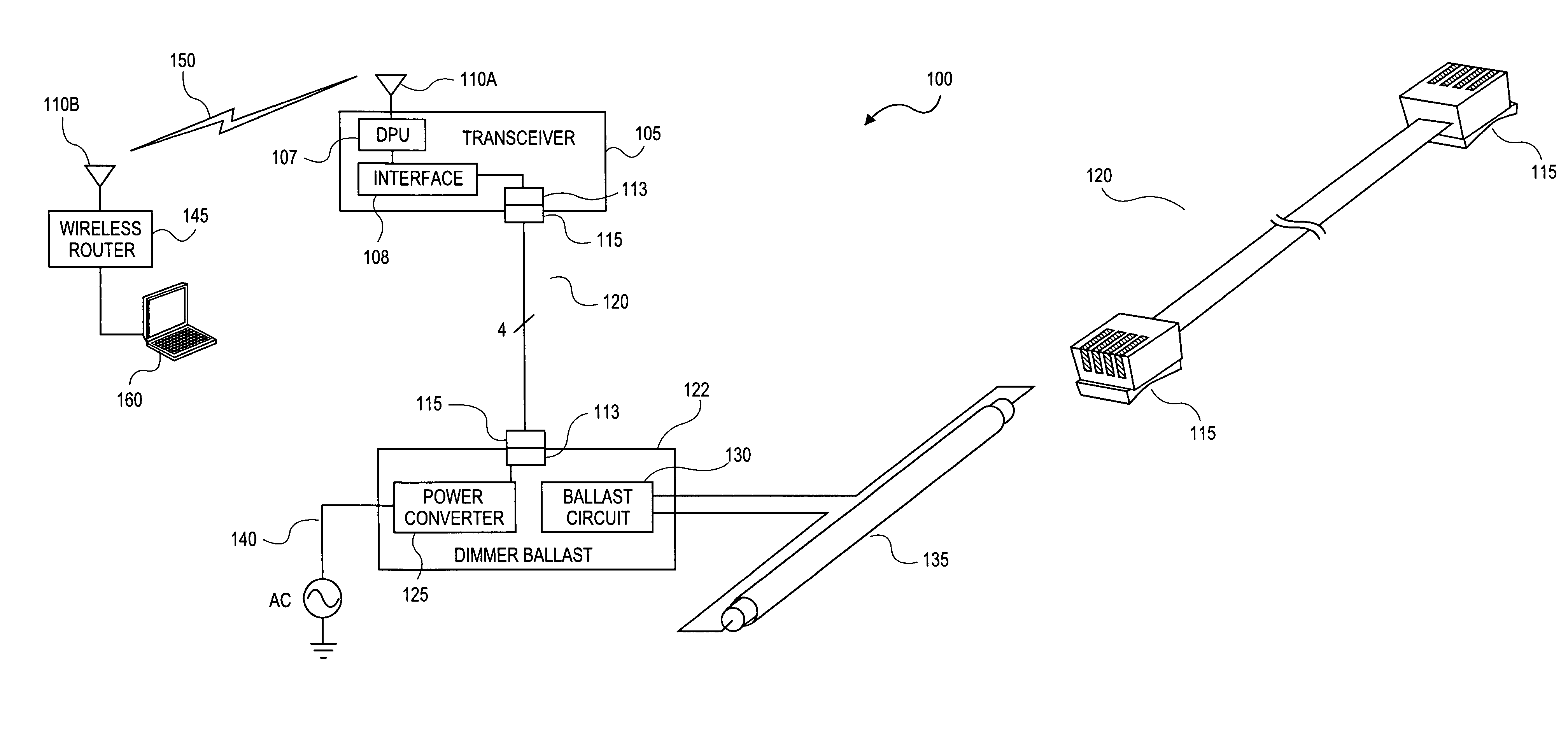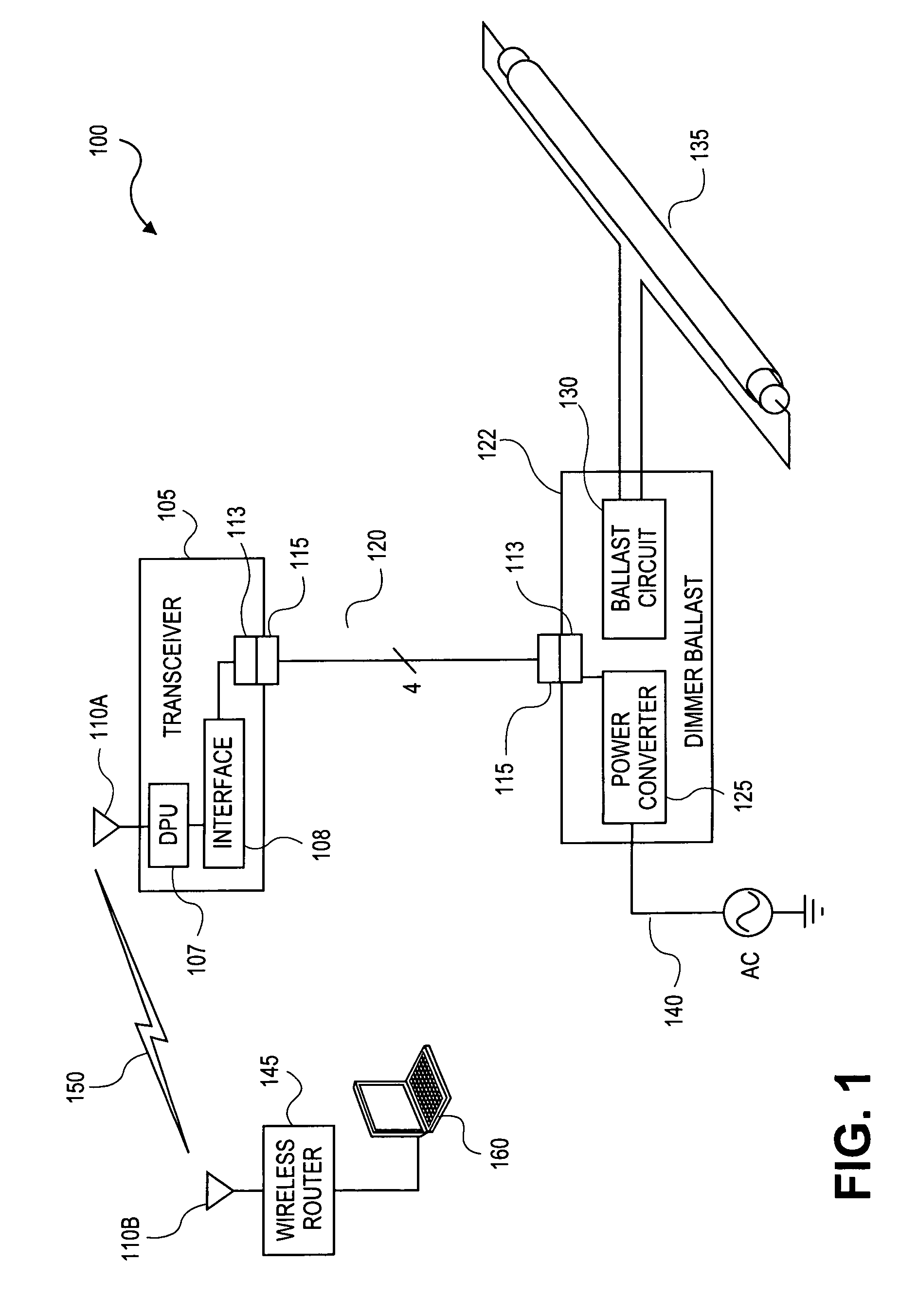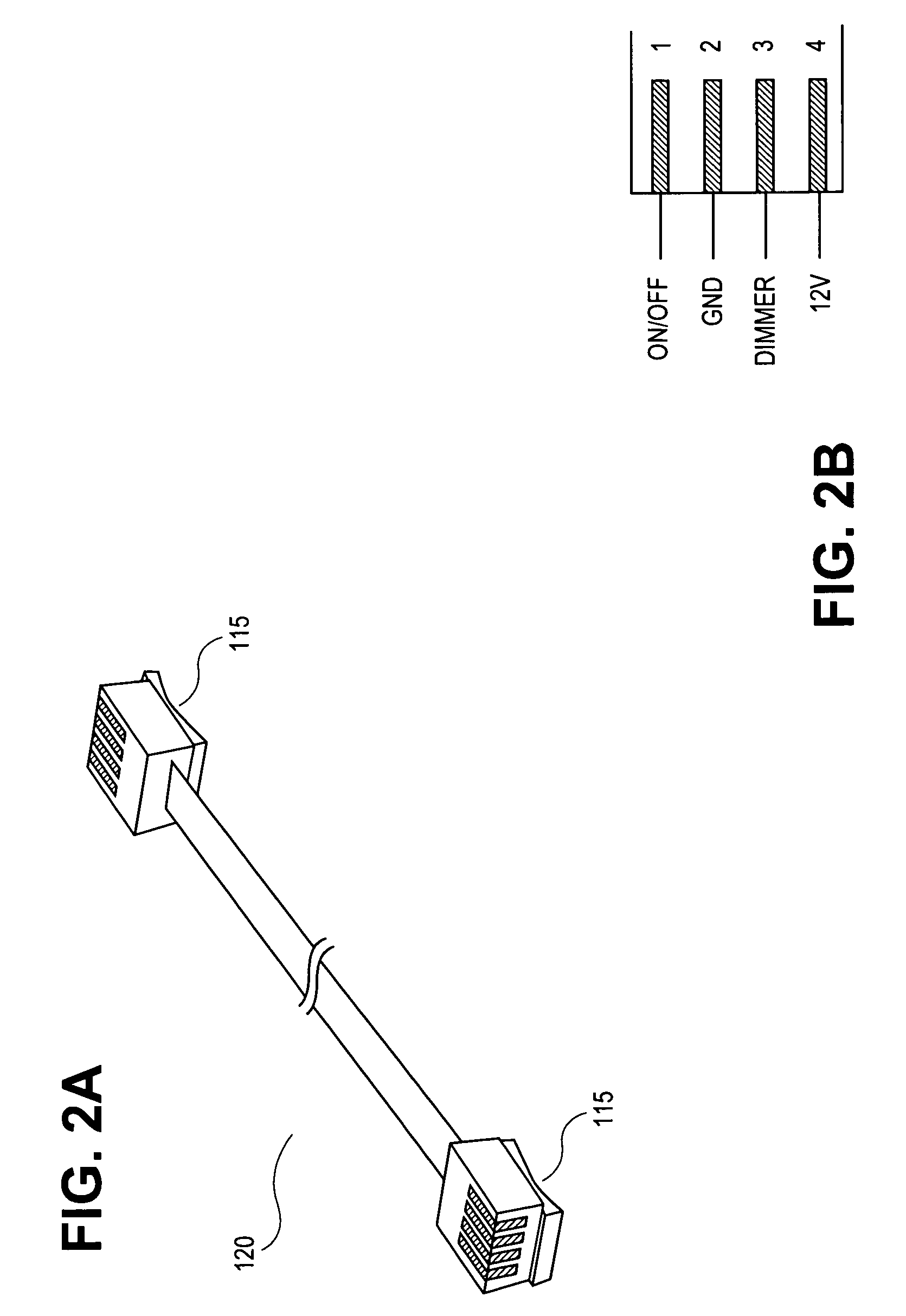Modular wireless lighting control system using a common ballast control interface
a wireless and wireless technology, applied in the field of lighting systems, can solve the problems of high labor intensity, general cost prohibitive, and high implementation cost, and achieve the effects of reducing energy consumption, reducing labor intensity, and facilitating and more effective ways of controlling lighting
- Summary
- Abstract
- Description
- Claims
- Application Information
AI Technical Summary
Benefits of technology
Problems solved by technology
Method used
Image
Examples
Embodiment Construction
[0030]The present invention involves the use of a standard interface that provides wireless control of a ballast while minimizing the electromagnetic interference that a ballast transformer would impart on a wireless transceiver. The standard interface enables different lighting components, such as motion sensors, light harvesting sensors, relays, etc., to derive power, such as DC power, from the ballast and provide control signals, such as dimming control, to the ballast. The standard interface enables one to easily design and install one or more lighting systems for a room with minimal invasive wiring. Further, by using modular components that connect to the standard interface, and a standard interface cable, a building can have a variety of lighting configurations in different rooms while minimizing the number of different parts to maintain in inventory. Additionally, by using modular components with standard interfaces, and by incorporating wireless technology, existing building...
PUM
 Login to View More
Login to View More Abstract
Description
Claims
Application Information
 Login to View More
Login to View More - R&D
- Intellectual Property
- Life Sciences
- Materials
- Tech Scout
- Unparalleled Data Quality
- Higher Quality Content
- 60% Fewer Hallucinations
Browse by: Latest US Patents, China's latest patents, Technical Efficacy Thesaurus, Application Domain, Technology Topic, Popular Technical Reports.
© 2025 PatSnap. All rights reserved.Legal|Privacy policy|Modern Slavery Act Transparency Statement|Sitemap|About US| Contact US: help@patsnap.com



